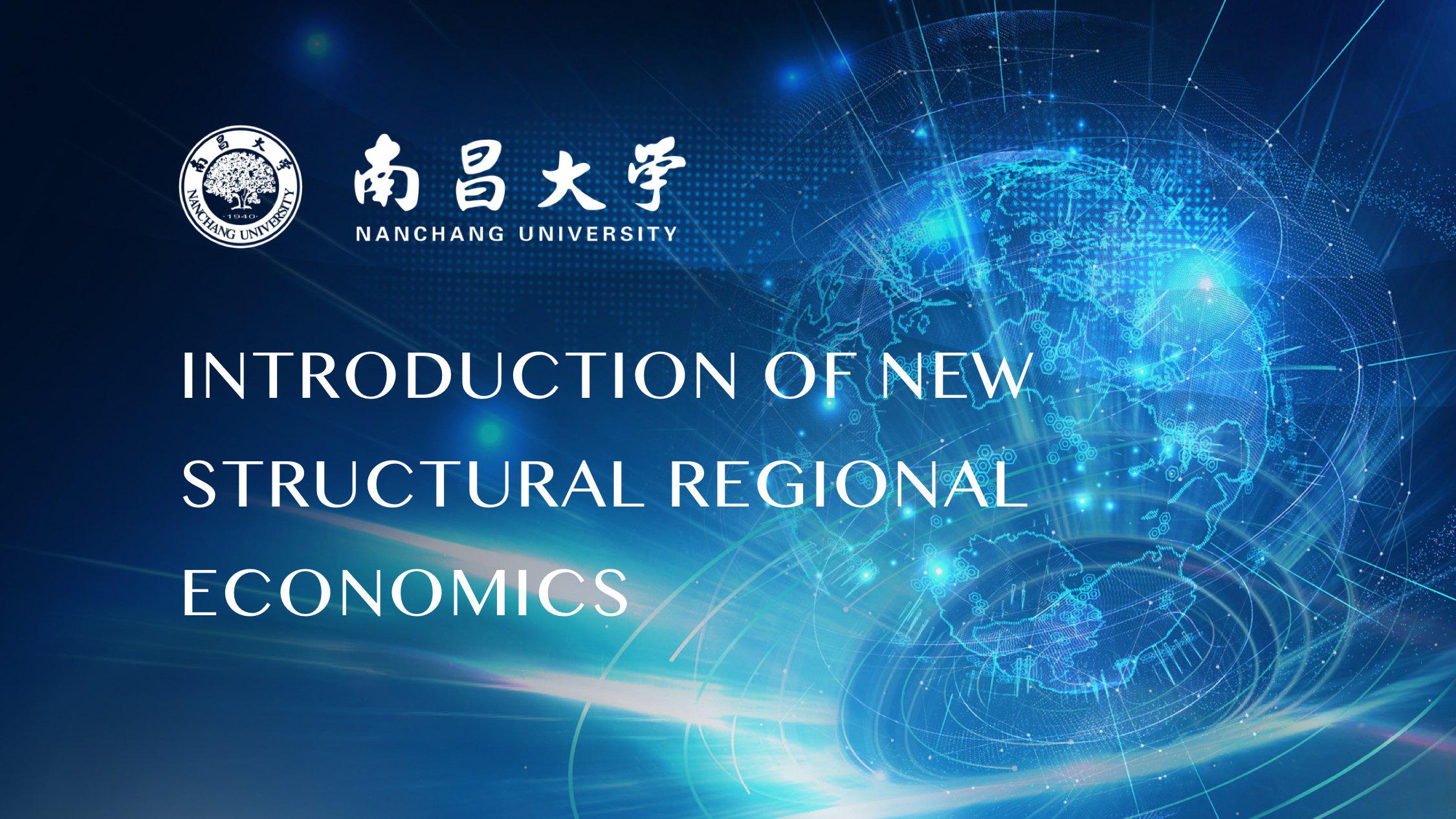Profoundly integrating the New Structural Economics, the regional economic theories and their related practical cases, the Introduction of New Structural Regional Economics is a course jointly presented by the School of Economics and Management of Nanchang University and the Institute of New Structural Economics at Peking University. As a third-generation development economic theory, New Structural Economics possesses a great significance for the economic development of China and other developing countries.
Especially, faced with regional development disparity and inadequacy of China in the new era, this is a theory that is formed based on Chinese theories, designed for resolving Chinese issues with abundant Chinese-style applications and closely following the call of the new era’s development, therefore in a sense it could also provide experiences and references for other developing countries on a similar path of catching-up.
The course is aimed at enabling students to fully comprehend the past, the present and the future of China’s regional economic development issues and their causes; promoting Chinese experience and wisdom in regional governance; strengthening students’ abilities to explain the regional issues using New Structural Regional Economics; and fostering students’ high ideals in academic performance and consolidating students’ sense of mission in creating more original Chinese theories that are rooted in China.
The main features of this course are as follow: 100% delivered in English with bilingual subtitles (Chinese and English), which provides convenience for learners at home and abroad; highlighting the Chinese theory and promoting the political economics with Chinese characteristics; thoroughly tapping Chinese wisdom and experience so that the world can better understand China; combination of the theory and practice, fully demonstrating the vivid cases of China's poverty management and rural revitalization, the Belt and Road Initiative and the opening up to the outside world, and the high-quality development of the Yangtze River Economic Belt, etc.
1.An Overview of China's Economic Development: The Origin of NSRE
1.1 A Mysterious Line: Hu Line
1.1.1 China's Physical Geography
1.1.2 Hu Line
1.1.3 Economic catch-up of the central and western China
1.2 Common Prosperity: China's gradual regional development
1.2.1 Overview of China’s economy
1.2.2 Coastal special economic zones in China
1.2.3 Western Development strategy in China
1.2.4 Northeast China Revitalization Plan
1.2.5 Rise of Central China Plan
1.3 Metropolitan Area: Key to Coordinated Regional Development of China
1.3.1 Coordinated regional development and main functional area
1.3.2 China’s urban agglomeration pattern and the economic effect
2. Classical Theories of Regional Development
2.1 Agricultural location theory
2.2 Growth Pole Theory
2.3 The Stages of Economic Growth
2.4 Pole & Axis System Theory
2.5 Center-periphery theory
3. New Structural Economics and Its Policy Application
3.1 Why New Structural Economics
3.2 The Theoretical Foundation of New Structural Economics
3.3 Does New Structural Economics Offer Explanations?
3.4 Application for Industrial Policy
3.5 Does the idea of New Structural Economics work?
4. Principals of New Structural Regional Economics
4.1 Regional Externality
4.2 Endowment Structure Transformation
4.3 Role Boundary of Facilitating Government
4.4 Spatial Optimal Equilibrium
4.5 Evolution of Dynamic Spiral
5. The Practice of New Structural Regional Economics in Developing Economies
5.1 China's Development Experience and OFDI
5.2 Commonness and New Trends of Developing Countries
5.3 Industrialization of Developing Countries with Special Economic Zones
5.4 Growth Identification and Facilitation Framework (GIFF)
5.5 GIFF in Practice and Case Studies (Nigeria, Benin and Uzbekistan)
6. The Practice of New Structural Regional Economics in China
6.1 The Theory of County Economic Competitiveness
6.1.1 The global competitiveness model and its theoretical basis
6.1.2 The Brief introduction of the Theory of County Economic Competitiveness
6.2 Strategic Framework of New Structural County Development
6.2.1 Situation of the Chinese Counties: Development Stage、Location Characteristics and Natural Res
6.2.2 The other Situation of the Chinese Counties and The Case of Qinyuan Pencil
6.2.3 The County's Development Strategy (comparative advantage) Analysis
6.2.4 The Other County's Development Strategy (comparative advantage) Analysis and Conclusion
6.3 China’s County Development Strategy
6.3.1 The Case of Jinjiang and Guanling
6.3.2 The Case of Qianyang and Changzhi
6.3.3 The Case of Hotan
7. A Demonstration of China's Development Achievements
7.1.1 Targeted Poverty Alleviation Strategy
7.1.2 Cases of the Old Revolutionary Base Areas
7.2 Growth Identification and Industrial Policy: Jilin Revitalization
7.3 Facilitating Government and Efficient Market: Development of Yangtze River Economic Belt
7.3.1 The Carrying Capacity of Yangtze River Economic Belt
7.3.2 The Development of Yangtze River Economic Belt
7.4 Growth Identification and Facilitation: Integration of Yangtze River Delta and High-quality Deve
Final Examination

